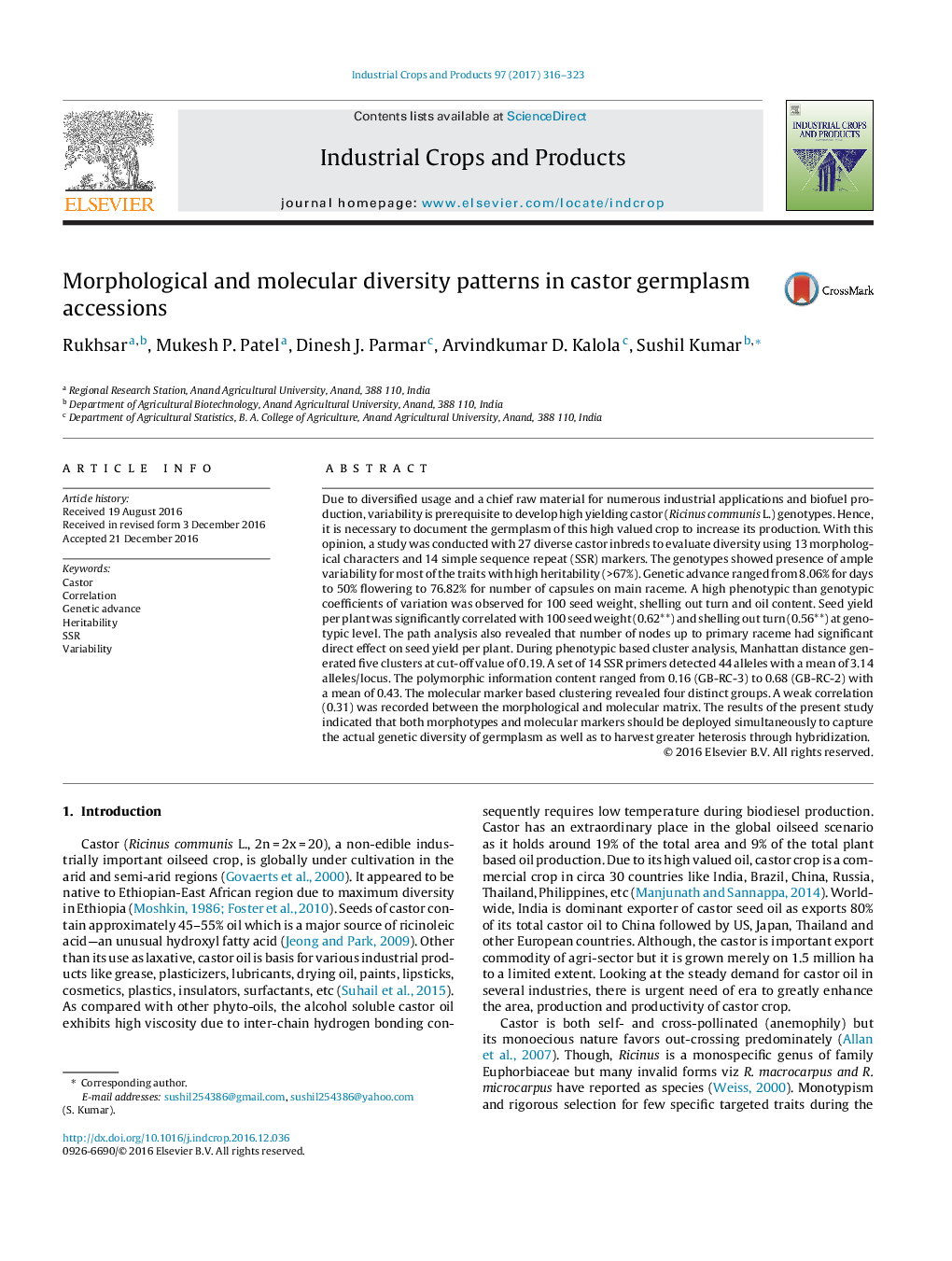| Article ID | Journal | Published Year | Pages | File Type |
|---|---|---|---|---|
| 5762273 | Industrial Crops and Products | 2017 | 8 Pages |
Abstract
Due to diversified usage and a chief raw material for numerous industrial applications and biofuel production, variability is prerequisite to develop high yielding castor (Ricinus communis L.) genotypes. Hence, it is necessary to document the germplasm of this high valued crop to increase its production. With this opinion, a study was conducted with 27 diverse castor inbreds to evaluate diversity using 13 morphological characters and 14 simple sequence repeat (SSR) markers. The genotypes showed presence of ample variability for most of the traits with high heritability (>67%). Genetic advance ranged from 8.06% for days to 50% flowering to 76.82% for number of capsules on main raceme. A high phenotypic than genotypic coefficients of variation was observed for 100 seed weight, shelling out turn and oil content. Seed yield per plant was significantly correlated with 100 seed weight (0.62**) and shelling out turn (0.56**) at genotypic level. The path analysis also revealed that number of nodes up to primary raceme had significant direct effect on seed yield per plant. During phenotypic based cluster analysis, Manhattan distance generated five clusters at cut-off value of 0.19. A set of 14 SSR primers detected 44 alleles with a mean of 3.14 alleles/locus. The polymorphic information content ranged from 0.16 (GB-RC-3) to 0.68 (GB-RC-2) with a mean of 0.43. The molecular marker based clustering revealed four distinct groups. A weak correlation (0.31) was recorded between the morphological and molecular matrix. The results of the present study indicated that both morphotypes and molecular markers should be deployed simultaneously to capture the actual genetic diversity of germplasm as well as to harvest greater heterosis through hybridization.
Related Topics
Life Sciences
Agricultural and Biological Sciences
Agronomy and Crop Science
Authors
Rukhsar Rukhsar, Mukesh P. Patel, Dinesh J. Parmar, Arvindkumar D. Kalola, Sushil Kumar,
